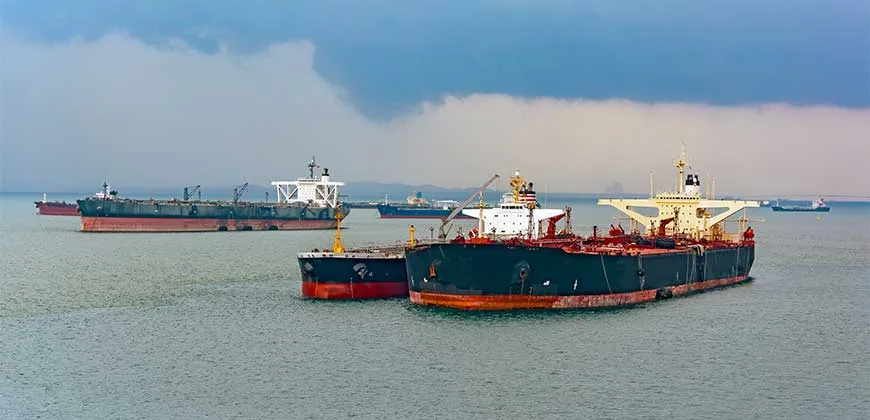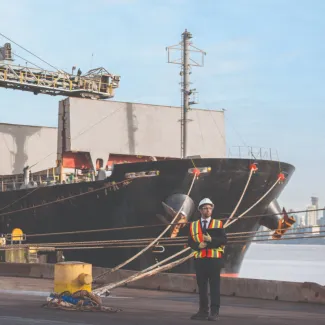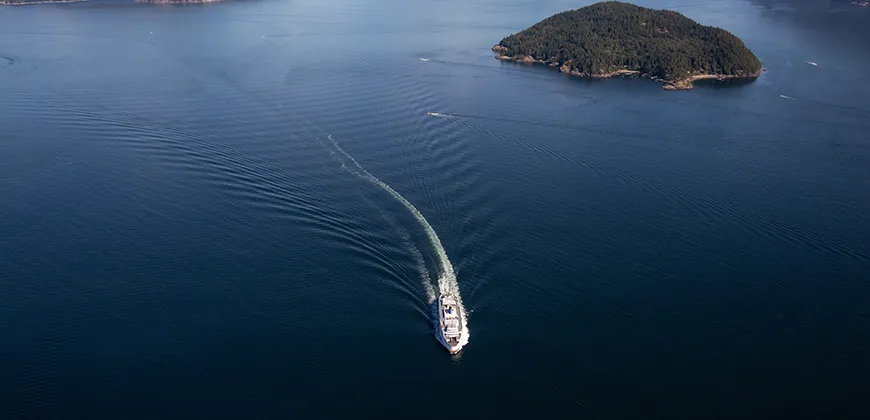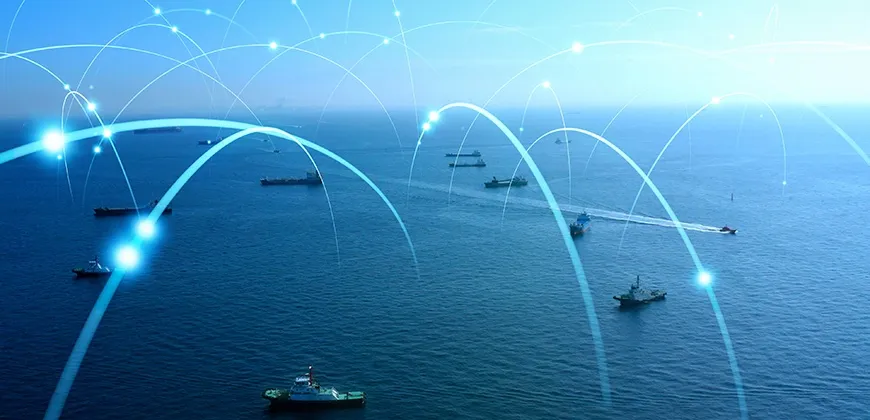Assessing the feasibility of offshore green hydrogen production
Peter Shaw-Wood, a student in the Master of Engineering Leadership in Naval Architecture and Marine Engineering, set out to see if green hydrogen could be produced using ocean currents as the energy source.

Governments and businesses around the world are seeking cleaner energy solutions to meet ambitious emissions reduction targets. Hydrogen is a promising energy source that can help decarbonize many industry sectors. However, it is challenging to produce it economically and at scale, particularly when using renewable energy in the production process.
For the industry research project that makes up the summer term of the program, Peter Shaw-Wood, a student in the Master of Engineering Leadership (MEL) in Naval Architecture and Marine Engineering, conducted a preliminary economic assessment for floating, production, storage and offloading (FPSO) facility for producing hydrogen.
“In Canada, we have two operating FPSOs on the east coast, with a third – the Bay du Nord project – having just been approved,” he says. “All of them exploit offshore oil and gas.”
Peter wondered if it would be technically and economically feasible to produce green hydrogen on an FPSO. “There’s a lot of hype around hydrogen right now and a big push to advance green hydrogen production methods,” he says. “There’s currently a wind project in Newfoundland that’s in the proposal phase for producing hydrogen. I was curious if something similar could be done on an FPSO using ocean currents as power.”
One of the main challenges in producing green hydrogen is finding a clean source of energy to drive the electrolysis process. Peter’s project explored the logistics of using ocean currents to run a turbine that would generate the electricity needed to electrolyze seawater and produce hydrogen.
His analysis identified potential offshore locations for the FPSO that have the consistent high-velocity currents required to provide a stable source of energy. He also reviewed the size of ship needed, as well as the types of equipment.
Peter’s review determined that it is currently not economically feasible to produce green hydrogen on an FPSO using ocean currents as an energy source. As he notes, one challenge is that the devices used to capture energy from the ocean are not yet developed across the industry. As the technology evolves and becomes more efficient, an FPSO producing hydrogen could become feasible in the future.
This project leveraged Peter’s professional experience working in the offshore oil and gas industry with the naval sector knowledge and skills he developed in the MEL.
“I had worked in the oil and gas industry, specializing in offshore, and I wanted to broaden my knowledge base and gain more technical confidence to move into naval architecture roles and be less of a specialist. The professors in this program are very experienced and knowledgeable, and highly connected with industry, which is fantastic.”



